Mathematics and the External World:
An Interview with Prof. A. T. Fomenko
One of the Soviet Union's leading mathematicians shares his views on the current state of mathematics, the decline in popularity of "pure" mathematics, the interrelation between mathematics and applications, and the mathematician as artist, musician, historian.

Professor Anatoly T. Fomenko was born on March 13, 1945 in the Ukrainian city of Donetsk, and he grew up and went to school in Magadan, a port city in the far east of the Soviet Union. He first came to the notice of Moscow mathematicians when as a high school student he won first place in one of the Math-Physics Olympiads. After seven years of undergraduate and graduate study at Moscow University, in 1969 he received his Candidate's degree (Ph.D.) with the thesis "Totally Geodesic Models of Cycles." Then three years later, at the unusually young age of 27, he earned his Doctor's degree (much higher than an American Ph.D.) with the prize-winning dissertation "The Multidimensional Plateau Problem on Riemannian Mani folds."
Q. Professor Fomenko, could you describe in simIe terms the Plateau roblem and our solution to it?
A. The modern "Plateau problem" is a natural outgrowth of the problem originally formulated by the remarkable nineteenth century Belgian physicist Joseph Plateau. He asked whether any wire contour in space is the boundary of some soap film spanning the contour. From a mathematical point of view, this is equivalent to asking whether a surface of zero mean curvature exists with a prescribed boundary. Such surfaces are usually called "minimal surfaces" (or surfaces in minimal area), since a small perturbation of such a surface can only increase its area. For example, according to a theorem of Laplace and Poisson, the dividing surface between two media in equilibrium is a minimal surface.
This problem can also be formulated as follows. Consider all possible continuous maps from two—dimensional manifolds with boundary to three-dimensional space such that the boundary of the manifold goes to a fixed boundary contour in space. Of course, the image of the manifold under these maps can have singular points, and so on. One then asks, "In the class of images of these maps does there exist a surface of minimal area?" In this form the problem was solved in the first half of the twentieth century by the outstanding mathematicians ].Douglas and T.Rado.
However, attempts to extend their result to higher dimensions encountered serious difficulties. ln the modern calculus of variations one finds several possible formulations of the multidimensional Plateau problem. Some remarkable existence theorems for minimal surfaces which ''fill in" a fixed contour—mani— fold in the sense of homology theory were proved in a series of fundamental papers by such leading mathematicians as H. Federer, F. J. Almgren, E. Bombieri, De Georgi, E. Giusty, W. Fleming, E. R. Reifenberg, C. B. Morrey, M. Miranda, R.Harvey, B. Lawson, and S. S.—T. Yau.
My solution to the Plateau problem was in some sense closer to the formulation of Douglas and Rado. Namely, I proved that in the class of surfaces which are the continuous images of spectrum of smooth manifolds and have a prescribed boundary, there is always a surface (more precisely, spectrum-surface) of absolutely minimum volume. Roughly speaking, among all spectral surfaces with given boundary there is always one of least volume. This minimal soap film might have singularities.
Q. What have your main directions of research been since your solution to the Plateau problem?
A. I found a solution to Plateau's problem in the class of "stratified manifolds" with singularities based upon a fusion of several ideas which at first seem rather different from one another. It turned out that there is a natural formulation of Plateau's problem in the language of "bordisms." Two manifolds are said to be "bordant" if they are boundaries of a manifold of one higher dimension. Introducing the language of bordism theory made it possible to apply the powerful techniques of modern algebraic topology to Plateau's problem.When combined with the latest methods in the multidimensional calculus of variations, these techniques met with success. Moreover, the resulting method for minimizing the volume of the surface turned out to be so effective that one could exhibit many concrete globally minimal surfaces in some well-known manifolds (for example, in symmetric spaces). This led to the development of a theory in which the theory of Lie groups and symmetric spaces, as well as topology and the calculus of variations, play a role. In some sense one can say that this solution to Plateau's problem is situated at the junction of several major fields of modern mathematics.
Q. How do your students now (undergraduate and graduate) compare with those you had 10 or 15 years ago? Does mathematics still attract the best students in Moscow—or do you, like us in the West, see a declining popularity and prestige of theoretical mathematics?
A. Recent years have seen a change in the attitude of undergraduate and graduate students toward "absolutely pure" mathematics. This phenomenon can perhaps be described as a weakening of interest toward traditional abstract areas which at first glance seem to be far removed from applications. For example, today's student prefers merely to be told briefly about the existence of a continuous function which does not have a derivative at any point, and does not want to go into detail about the construction of such a function. Such mathematical objects are viewed as pathologies which never (or rarely) occur in the "real world" of science. More generally, it seems to me that interest in "mathematical pathologies," for which it is impossible (or difficult) to find examples in physics, mechanics, etc. - and the study of which usually requires a high level of abstraction and some rather refined methods - is disappearing. Both the undergraduate and graduate students now ask (more often than ten years ago): Why (and where) does one need to know what you are telling me to learn?
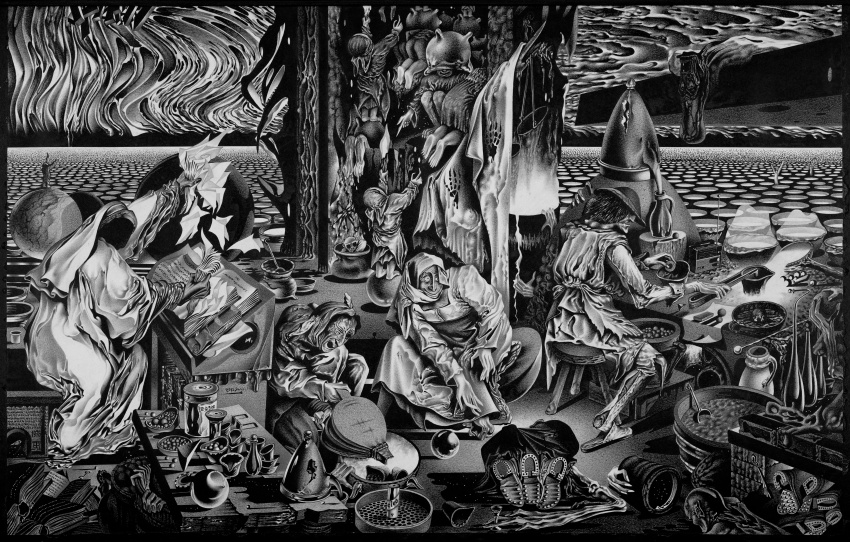
I think that it is this tendency to "bn'ng mathematics down to earth" which has led to the appearance of books aimed at showing connections between areas of abstract mathematics and the real world. An example is the effective, attractive and very valuable book The Fractal Geometry of Nature by B. Mandelbrot. In my own most recent book Topological Variational Problems I also tried to take into account the new mood, by showing the relationship between modern variational problems and mechanics and physics.
Mathematics continues to hold an attraction for today's students. Only the psychological climate has changed. There is less of an emotional element. There has been a sharp decline in the "poetization" of pure mathematics. Mathematics has come of age; the "sentimental flights of fancy" have become a thing of the past. Mathematics is perceived more soberly and seriously. This process was probably inevitable.

Q. What changes would you like to see in mathematical pedagogy?
A. I do not think it is realistic to attempt to predict trends in the development of mathematical education. It seems worthwhile to expand the list of natural science courses which mathematics majors are required to take. In this way they will be exposed to a large choice of various points of view on mathematical disciplines which may be useful to them later in their research. In the first place, math students should acquire a deeper knowledge of modern mechanics and physics. It would also be extremely valuable to have a required course on the history of mathematics and physics. Unlike most courses which now exist on that subject, this course would be primarily concerned not merely with lists of facts (who discovered what when), but rather with the actual development of various discoveries. In particular, it would be useful to study the mistakes that were made, analyze the fallacious theories which dominated certain periods in the development of the science. That is, we would teach our students about the mistakes as well as the successes of the past. Of course, such a course would have to be given by active researchers in the particular areas of pure and applied mathematics. It is not clear whether such an idea can realistically be implemented: such specialists usually do not have the time to give such courses (since the preparation of lectures for such a course would require a lot of effort).
Q. Do you and your colleagues in Moscow feel much pressure to become interested in applied problems? Do you think such pressure is good or bad for mathematics?
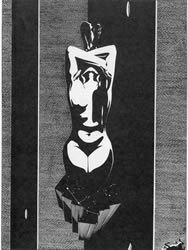
A. I think that "pressure" is not the right word to use. Rather, one could say that the "prestige coefficient" of various branches of pure mathematics has changed. This variation in prestige is equally the result of many factors: changes in the questions that interest a number of leading mathematicians (and hence their students); changes in the very criteria for valuable work, with resulting changes in the atmosphere in various groups of mathematicians; oscillations in the demand for various types of mathematicians by industries and technical institutes; and so on. It seems to me that interest in applied problems is increasing now especially in connection with the broad dissemination of computer technology. Excellent examples of the successful synthesis of mathematics and applied problems can be found in the recent work by such leading Moscow mathematicians as S. P. Novikov, V. P. Maslov, I. M. Gel'fand, D. I. Arnol'd, Yu. I. Manin, and others. In some sense the penetration of computers into different spheres of science has changed the psychology of the researcher. Personally, I welcome this tendency, although I do not claim that I fully understand it or can make prognoses for it.
Q. What applications of mathematics interest you most?
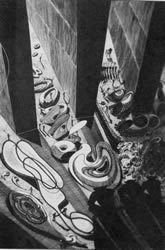
A. My own applied interests are concentrated in applications of mathematics to mechanics and to certain areas in the humanities. My work in the calculus of variations is closely connected with min- imal surfaces, which are mathematical models of soap films. More recently, I have investigated some questions in hamiltonian mechanics connected with multi« dimensional analogues of classical mechanical systems (for example, different types of motion of a rigid body: free motion, motion in the presence of gravity etc.). In addition, I am interested in developing and applying statistical-empirical methods to analyze narrative texts and to study certain questions in linguistics.
Q. On another subject, could you comment on relations between Soviet and Western mathematicians? Are disputes or misunderstandings common? On several accasions Soviet mathematicians have complained bitterly about authors or referees of articles in Western journals improperly ignoring work by Soviet colleagues and their students. Are you familiar with these cases? Could you explain what led to some angry letters from Soviet mathematicians? And in general, what can be done to improve the atmosphere of cooperation between Soviet and Western mathematicians?
A. Yes, there seems to be a tendency among some Western mathematicians "not to notice" the work of Soviet mathematicians. Authors in the West sometimes prefer to cite Western authors even in situations when a reference to an earlier and more important Soviet paper would be considered obligatory from any point of view.
One also encounters the following "forgetfulness" mechanism. A Soviet article appears which gives rise to a whole series of research articles by Western mathematicians working in this new direction. At first these authors do cite the Soviet paper; but in their subsequent publications, which are also a direct outgrowth of the original Soviet work, the citation to the Soviet paper disappears. They begin to cite only their own papers on the subject, as if the first pioneering work which inspired the line of research never existed.
I believe that we are much more careful about citing Western authors in our publications. Part of the reason is undoubtedly that we exert considerable effort to keep abreast of Western research, whereas Western authors are less likely to systematically read the Soviet papers in their field. This abnormal state of affairs would not have so serious consequences if there were frequent personal contacts between specialists in the same area. But unfortunately, personal contact is rare. In my opinion, the widely acknowledged high level of Soviet mathematics should cause Western researchers to want not only to keep up with the English translations of Soviet journals, but also to learn at least enough Russian to read specialized articles in their field.
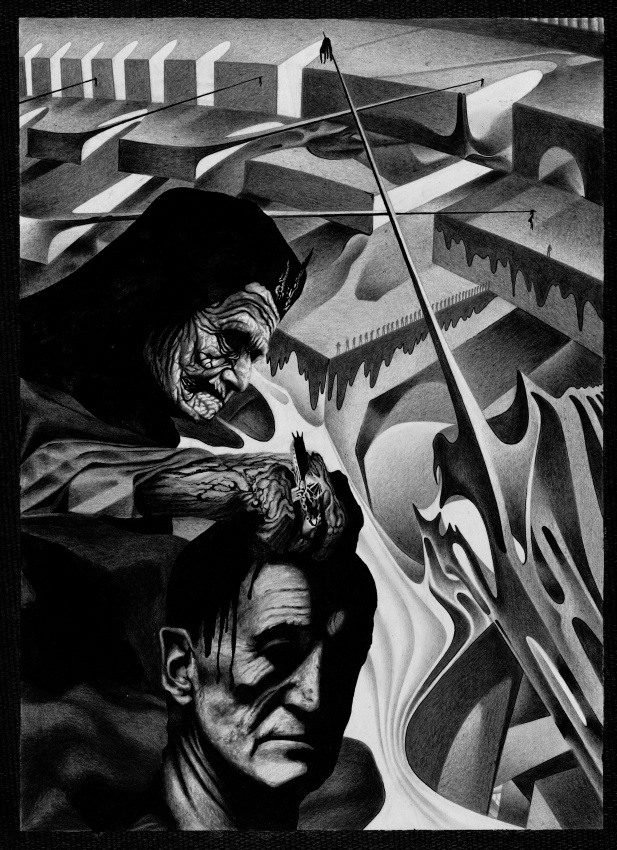
Q. Your art work has contributed to the success and popularity of several mathematics textbooks published in the Soviet Union, and more recently some which have been published in the West. When did you start painting? How did your artistic inclinations develop?
A. I inherited an ability to draw from my mother, Valentina Polikarpovna Fomenko, although she was not at all an artist by training. My first serious experiment in this direction was connected with the publication by Moscow University in 1967 of the book l-lomotapic Topology by Fuks, Gutenmakher and myself. I had the idea of illustrating this topology textbook not simply with formal sketches and diagrams, as one usually does, but rather with "freer drawings" showing complicated topological objects which do not readily lend themselves to visual representation. (By the way, the English translation of this book is due to appear soon.)
That experiment was successful, and marked the beginning of an area of my activity which I might call "mathematical graphics." At the present time I have completed about 280 works (paper, ink, pencil, canvas, oil, gouache), a large part of which are devoted to illustrating various mathematical objects and concepts. Many mathematicians have told me that they have been able to use my work to help them visualize what they formerly understood only in the language of formulas and had to imagine in a purely intuitive way.
I have always been intrigued by the possibility of showing non-mathematicians the intrinsic richness of the mathematical world, whose charm can only really be appreciated after spending many years traveling along its fantastic landscapes.
I should add that many of my graphics are devoted to areas far from mathematics: ancient legends, myths, emotional symbols, and so on.
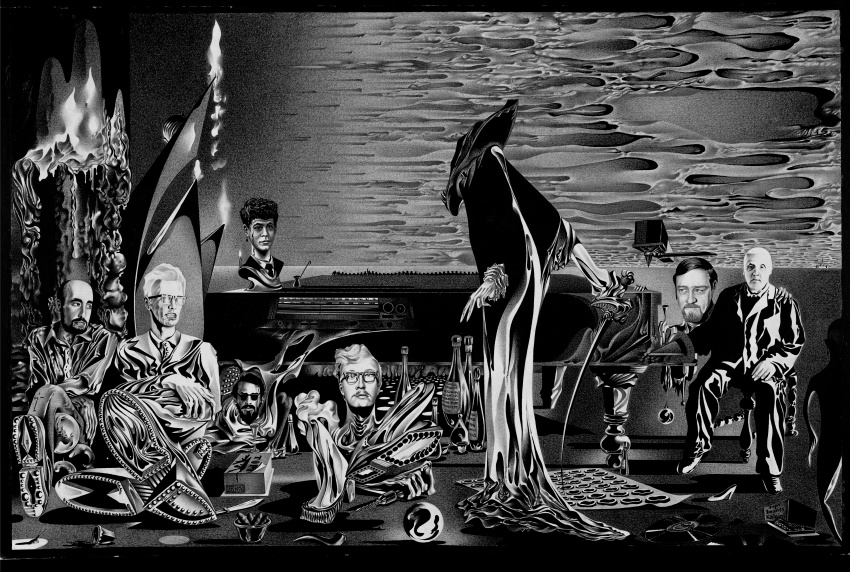

Q. As founder of the Moscow University music club and as an enthusiastic follower of several genres of music, could you describe your musical tastes and comment upon the often-noticed connection between mathematics and music?
A. It is true that the connection between music and mathematics has frequently been commented upon. And this connection is based upon real analogies. In answer to this question I would like to speak especially informally. It seems to me that the basic motif which mathematics and music have in common is the "infinity motif." The professional mathematician is continually dealing with infinite processes, and this gives rise to a certain "feel for the infinite" which in no way lends itself to formal description. Something similar happens in the world of music, a world which at first glance seems to be among the farthest from the "dry" realm of mathematics. But the two worlds have in common a high level of abstraction. In both, an abstract symbol can generate an entire world of emotions. Poincare was right in assigning an important role to intuition. The genesis of a mathematical result and the genesis of a musical experience have something in common. Personally, I find that a melody suggests to me geometrical images (deforming surfaces, erupting topological objects, etc.).
I feel closest to the so-called "late romanticism" of the late 19th—early 20th centuries. In music this was Bruckner, Mahler, Scriabin, Wagner. However, our music club does not limit itself to classical music. We have a special interest in electronic music and the best performers of such music. I especially like the striking compositions of]. M. Jarre. Among the bright lights in modern Soviet music are V. Vysotskii and A. Pugacheva.
At Moscow University, intensive interest in music among the mathematicians has a long tradition. It was P. S. Aleksandrov who played an especially important role in stimulating the musical education of our students.
Q. Do you see your artwork and musical interests as a rest from mathematics, a recreation? Or something more?
A. In no way do I consider my musical and artistic hobbies to be a rest from mathematics. They are simply (for me) a somewhat different form of mathematical thought. My graphics, which have no formal connection with mathematics, nevertheless bear the indelible imprint of my profession. In my opinion, mathematics is not simply a profession, but rather a way of thinking, a way of life. One does not put it aside.
But it should be noted that the specific styles of work of a mathematician and an artist are very dissimilar. Personally, I need several days in order to switch from one style to the other.
Q. Who or what influenced your style of drawing?
A. First of all, the remarkable artists-scholars-encyclopedists of the Renaissance, especially Leonardo da Vinci. After that, Bruegel and Bosch. I have a special series of graphic works which I titled "Conversations with Artists of the XV-XVI Centuries." Among modern artists I would mention Dali, Escher, Ciurlionis, Vasiliev. I have tried never to imitate them, but rather to understand what it was that they felt as they created their compositions. My own method is a sort of photographic reproduction of real mathematical worlds. Thus, my graphics always have very different and distinctive features.
Q. Some ofyour drawings strike us as unusual, eerie, or even terrifying. How do Soviet viewers react to those works?
A. Reactions go from one extreme to the other. One often hears diametrically opposite viewpoints: "splendid" or "dreadful." There are hardly any neutral opinions in the comment books at the exhibitions of my work. It seems to me that the tastes of our young people are more flexible than those of mature viewers. My drawings have to arouse a sense of fantasy in the viewer and give him/her a push in a new direction. Not everyone likes this.
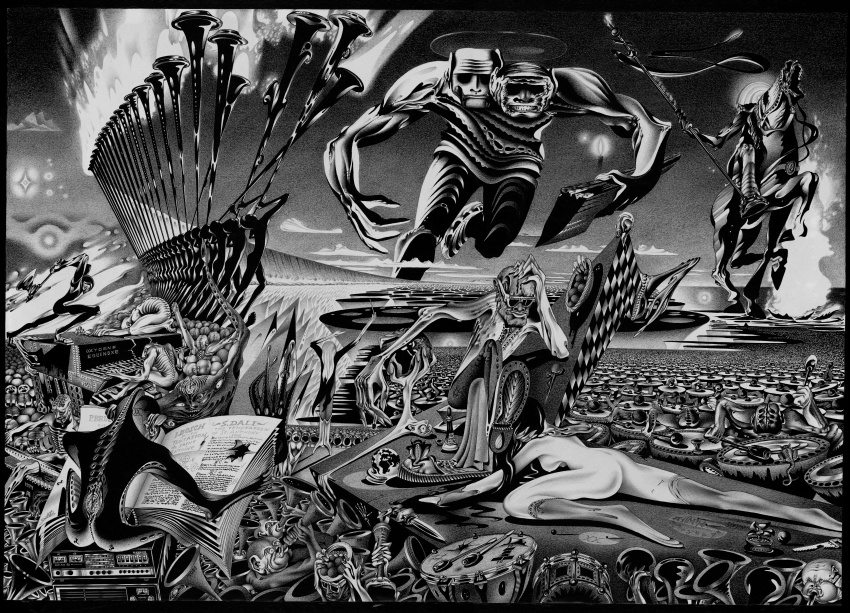
Q. You have recently written several articles in Soviet statistical journals introducing new techniques for historical dating. Some of the results of your investigations conflict dramatically with traditional chronology. Could you give some examples of your methods, and of some of the more unexpected conclusions they have led to?
A. This part of my activity is connected with possible applications of statistical-empirical methods in analyzing historical texts. Several new methods I have proposed for dating texts sometimes make it possible to establish a more precise chronology of ancient events. The results do not necessarily agree with traditional chronology.
However, this is a complicated and controversial subject, in which much remains to be done before full clarity is achieved. For this reason I would have to give explanations in much greater detail than is appropriate for this interview in order to describe examples of possible redating of ancient events. So I will have to refer the interested reader to my publications on the subject for such details. There is only one easily accessible publication in English: my article "Clobal Chronology and New Methods of Dating Ancient Events" will soon appear in English translation.
Q. Do you see an increasing use of mathematics in humanitarian disciplines such as history? What are the possibilities and limitations in the use of mathematics in those areas?
A. In my opinion, history is on the threshold of a major introduction of statistical methods. This development seems to me to be useful both for history and for mathematics. Of course, mathematical methods must play an auxiliary role, by enabling one to analyze large quantities of information and formulate various statistical conjectures. Such conjectures must ultimately be verified by historical specialists (in cooperation with scientists).
Uriivesity of Washington
Seattle, Washington 98195
THE MATHEMATICAL INTELLIGENCER VOL. 8, NO. 2, 1986